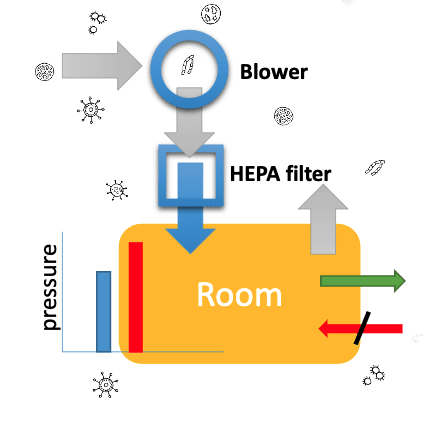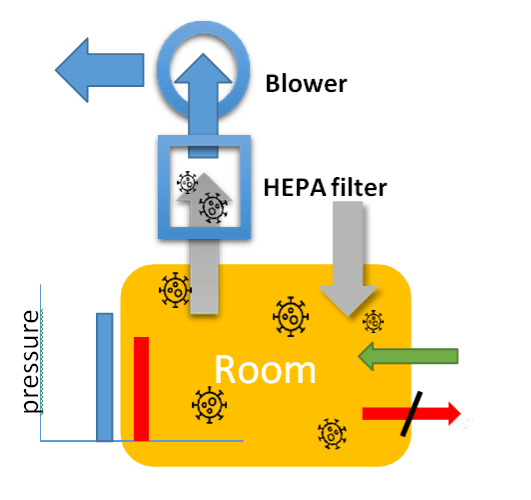Positive and negative isolation units are essential to infection control in medical settings. These units prevent the spread of pathogens via direct/ indirect contact and droplet transmission and maintain sterile restricted spaces.
UNDERSTANDING POSITIVE AND NEGATIVE PRESSURE
A negative pressure area (or room) uses lower air pressure compared to the external environment, allowing outside air into the segregated environment. This traps and keeps potentially harmful particles within the negative pressure area by preventing at the same time internal air from leaving the segregated area. This way, medical facilities can isolate patients with infectious conditions (AIIR) and protect the medical staff outside the room from exposure.
In contrast, a positive pressure area maintains a higher pressure inside the treated area than that of the surrounding environment. This means air can leave the room without
circulating back in. In this way, any airborne particle that originates outside the room will be filtered. Germs, particles, and other potential contaminants in the surrounding environment will not enter the room. A positive pressure room allows staff to keep vulnerable patients (for example, with compromised immune systems or immunosuppressed) safe from infections and disease.


